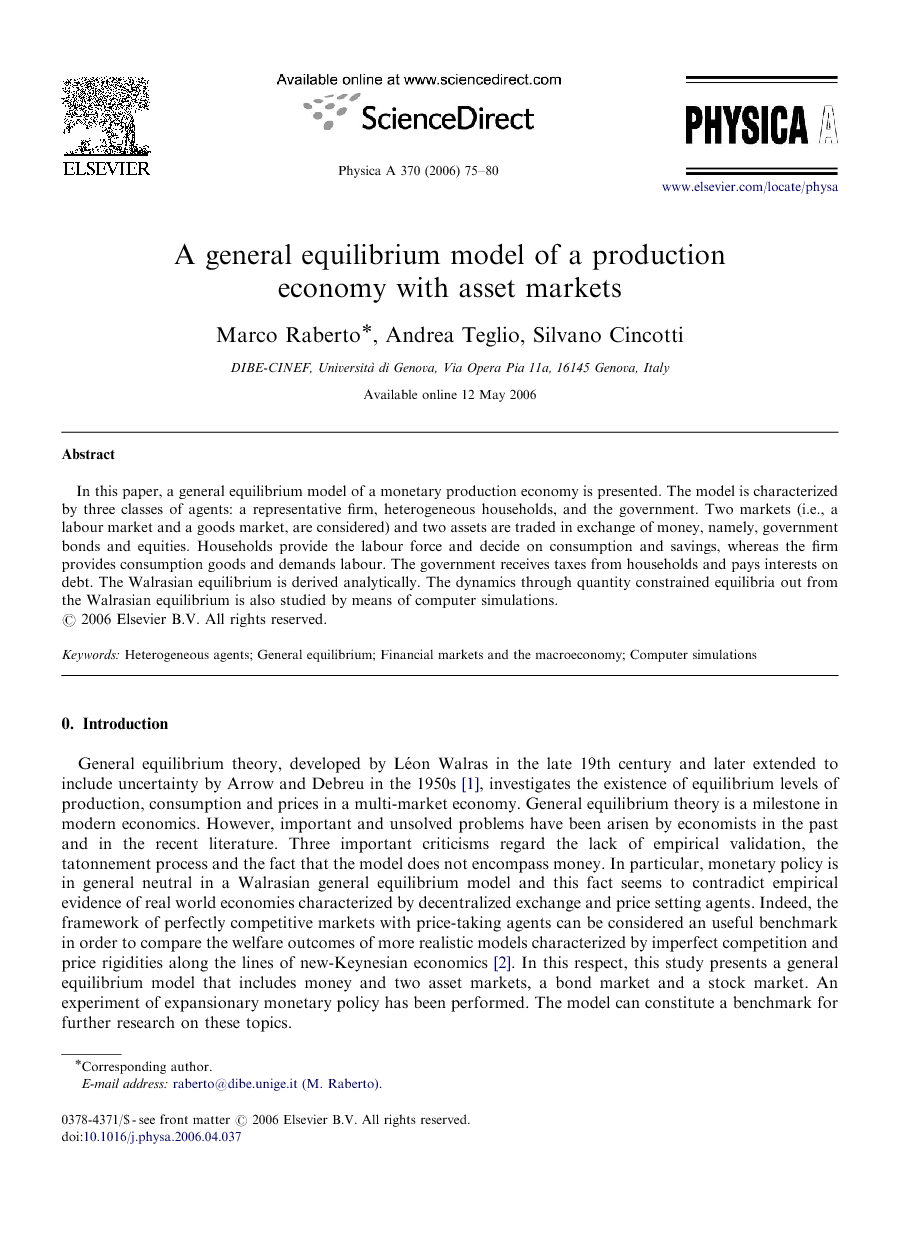ترجمه فارسی عنوان مقاله
یک مدل تعادل عمومی اقتصاد تولید با بازارهای دارایی
عنوان انگلیسی
A general equilibrium model of a production economy with asset markets
| کد مقاله | سال انتشار | تعداد صفحات مقاله انگلیسی |
|---|---|---|
| 28655 | 2006 | 6 صفحه PDF |
منبع

Publisher : Elsevier - Science Direct (الزویر - ساینس دایرکت)
Journal : Physica A: Statistical Mechanics and its Applications, Volume 370, Issue 1, 1 October 2006, Pages 75–80
ترجمه کلمات کلیدی
عوامل ناهمگن -
تعادل عمومی -
بازارهای مالی و اقتصاد کلان -
شبیه سازی های رایانه -
کلمات کلیدی انگلیسی
Heterogeneous agents,
General equilibrium,
Financial markets and the macroeconomy,
Computer simulations,

